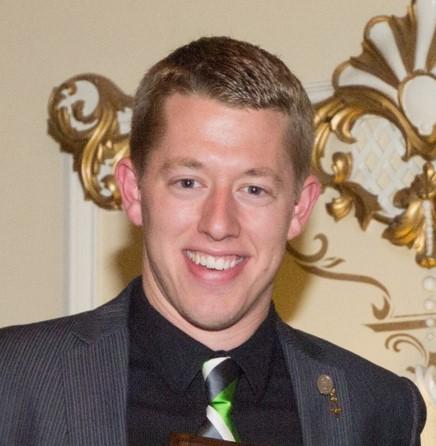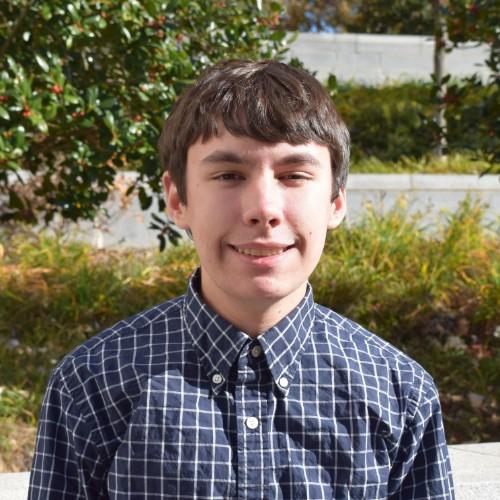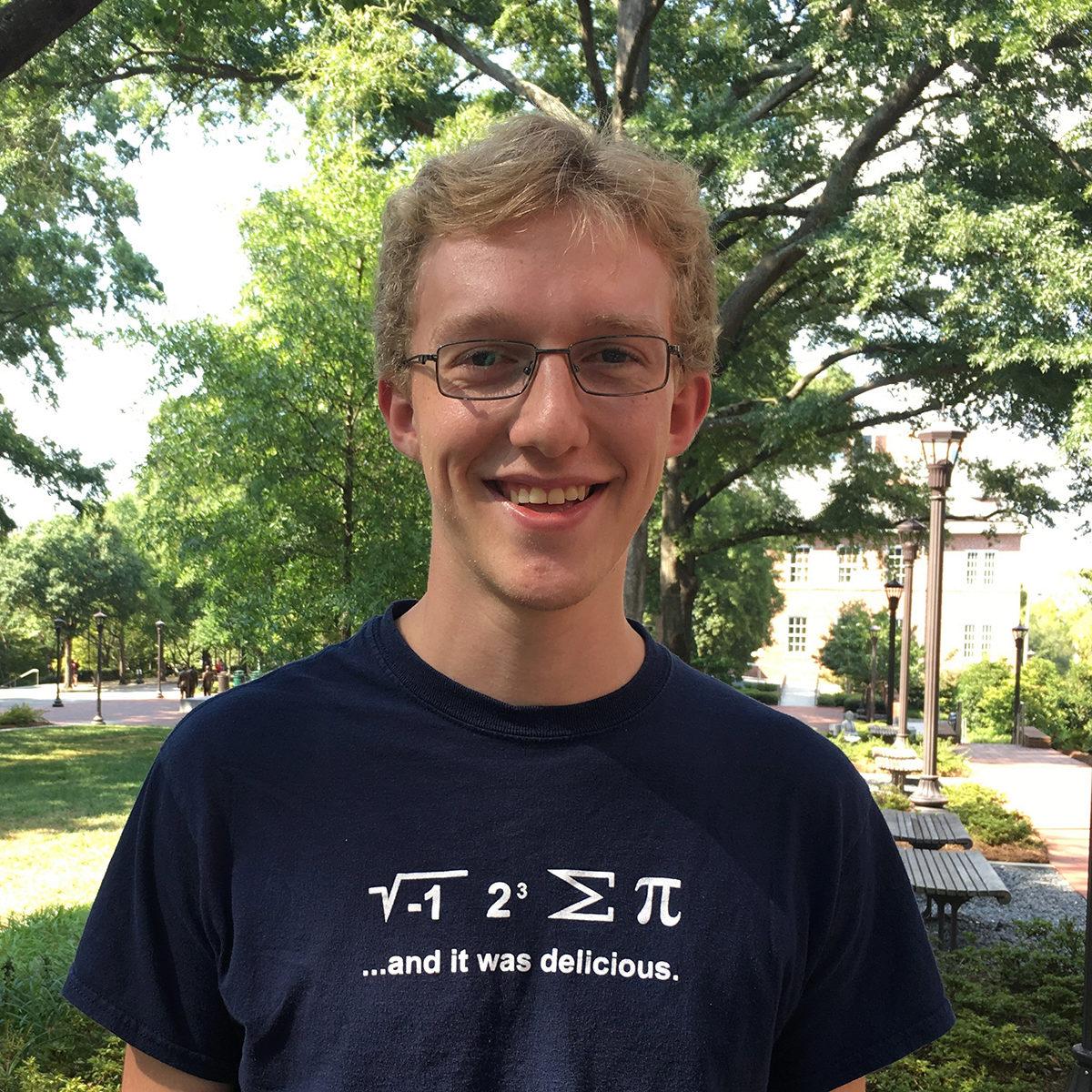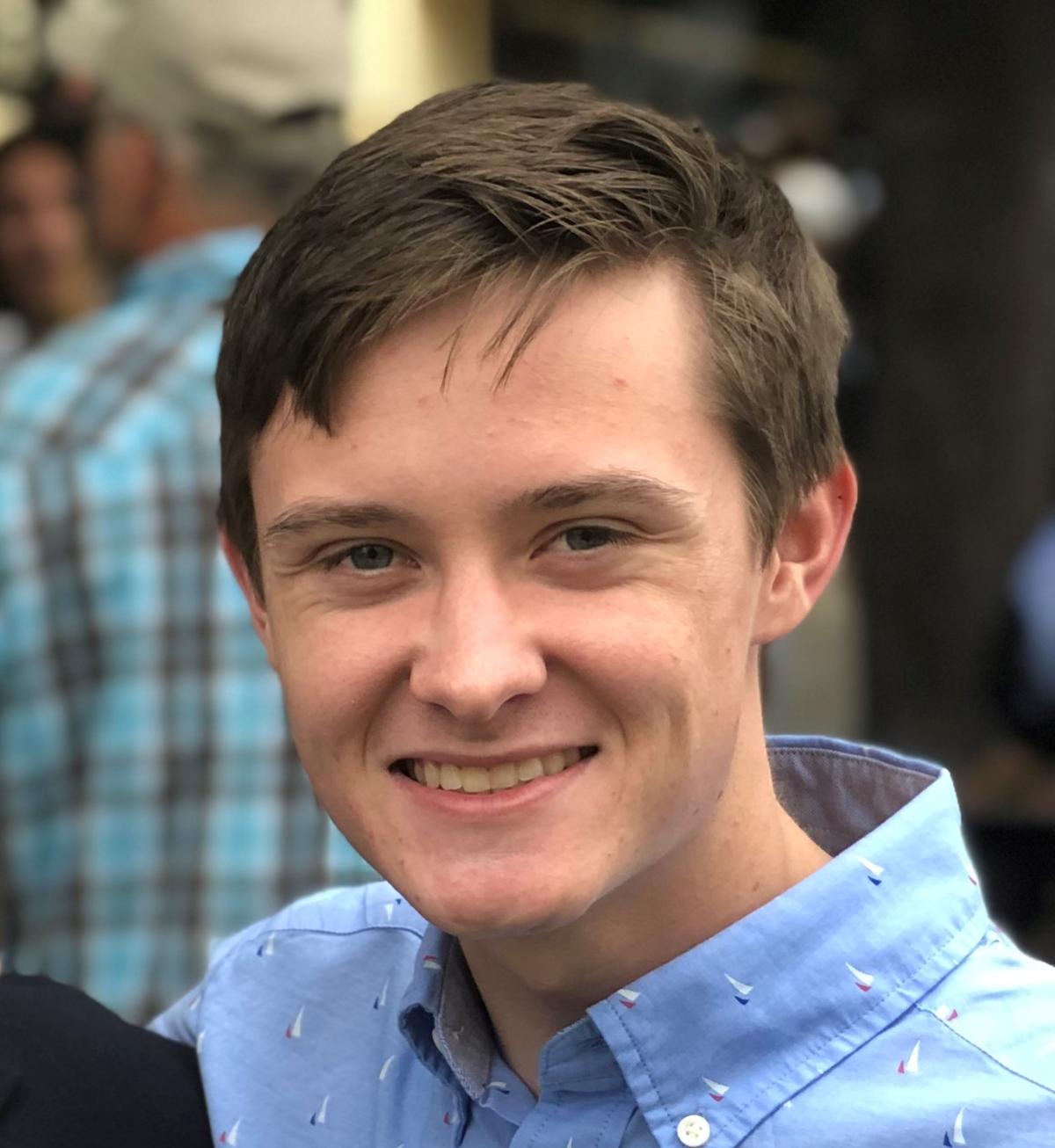September 24, 2021

Robert Clark
The success of future military aircraft depends greatly on their ability to dissipate the extreme thermal loads that are associated with the advanced weaponry and electronic systems onboard these aircraft. A design was developed for an aircraft thermal management system (TMS) capable of meeting these heat dissipation demands and rejecting heat loads into the bypass stream of a typical low-bypass ratio turbofan engine, or a ram-air stream. This presentation will discuss the design of the TMS system and how it was linked to the engine, and a comparison will be shown between the cooling capabilities of the ram-air stream versus the engine bypass stream, along with the benefits and drawbacks of each cooling stream. The ability of a sized TMS to reject the demanded aircraft loads throughout several key off-design points will be shown, along with the impact of engine bleeds on engine thrust and fuel consumption. The presentation will also discuss next steps for this research, most notably the need to develop variable cycle engine models.

Christopher Douglas
"Dynamics of Laminar Swirling Jets"
Even the simplest swirling jet flows possess an astonishing degree of complexity. This complexity is a two-edged sword, presenting both a unique opportunity to advance the science of fluid mechanics as well as a major barrier for a variety of engineering applications. Swirling jet technologies have proven crucial for enabling the increased efficiencies and drastically reduced emissions seen in modern combustion systems. However, the enhanced mixing and flame stability characteristics offered by swirling flow configurations are constrained by a relatively limited understanding of their dynamics, which continues to press the power and propulsion industry against the limits of reliable performance. In this work, the behavior of laminar swirling jets is considered from a dynamical systems perspective using bifurcation analysis. These results offer several new insights into the key physics of swirling jets, such as demonstrating bistability between competing low-pressure regions and characterizing the bifurcations and nonlinear dynamics of a variety of coherent limit-cycle structures from an initially steady state.
October 1, 2021

Aman Tanna
"Data-Driven Process-Structure-HCF strength models for Additively manufactured Alloy 625"
This research aims to investigate the influence of the microstructure, defect features, and surface roughness on the high cycle fatigue (HCF) strength of IN625 manufactured using Laser Powder Bed Fusion (L-PBF) additive manufacturing (AM) process. 11 AM builds each containing several fatigue test specimens with axis of specimen oriented in either the z-direction (build direction) or transverse direction were manufactured to explore the influence of variations in laser scan speed, hatch spacing, and L-PBF machine system. These processing conditions resulted in variations in microstructure, defect features, and surface roughness, all of which can influence fatigue strength. All specimens were stress-relieved before removal from build plate and then a hot isostatic press- ing (HIP) was performed. Specimens were tested in either as-is condition, with no further machin- ing or polishing, or in a polished condition to establish the role of surface roughness on fatigue strength. The fatigue strength of each specimen was determined using a step test method. To establish a reference stress-life curve and to validate the step test method, fatigue tests were also conducted on a cold-rolled IN625 sheet having similar strengths as the AM specimens. Stress-life curves that include the influence of microstructure are estimated using the fatigue strength data and the reference stress-life curve from the wrought IN625. The fatigue fracture surfaces were characterized with SEM microscopy to determine the microstructure feature associated with fa- tigue crack nucleation and understand the variability of the fatigue results. Average roughness for all builds was measured to find trends with the high cycle fatigue results. Tensile test results for various mechanical properties including Young's modulus, yield strength, ultimate tensile strength and strain to failure z and xy specimens was plotted against fatigue strength to find trends. Fatigue strength was also evaluated against processing parameters to assess the influence and find optimal design parameters. Finally, mean stress correction methods for different R values were used to calculate average fatigue strength for designer specifications.

Jonathan DeLozier
"CFD Analysis of Hypersonic Converging Diverging Nozzle"
When designing a nozzle for flow field generation via a shock tunnel, it is essential to ensure proper geometry and subsequently proper flow characteristics. This presentation details a computational fluid dynamics based analysis used to study the performance of such a nozzle and verify its geometry. In particular, this presentation focuses on a converging-diverging nozzle designed using the axi-symmetric Method of Characteristics to produce uniform, Mach 5 flow. Discussion includes boundary condition selection, grid generation, solver selection, simulation results, and solution validation. Additionally, comparisons are made between results from various turbulence models and next steps for this analysis are discussed.
October 8, 2021

Catherine Liu
“Turbulence Diagnostic Methods for Flame Characterization in a Swirl Nozzle Burner"
Flame burn profiles and behavior under a variety of flow conditions is a “hot” topic in propulsion for all types of fuel injectors, especially with the increased interest in coaxial swirl injectors. While analytical models and CFD have provided a wealth of information for laminar flow, existing turbulence models leave much to be desired. Direct numerical simulations are extremely computationally expensive and limited in scope, thus it is necessary to observe real-world turbulence phenomena to characterize it. Because turbulence occurs over such short length and time scales, characterizing flame patterns and recirculation zones requires very precise measurement techniques to capture the smallest features. This presentation will discuss a few precision systems for turbulence diagnostics, including hot-wire anemometry, laser-doppler velocimetry (LDV), and particle image velocimetry (PIV), along with their respective advantages and limitations. Data collection methods and data post-processing will also be discussed for the PIV case
October 15, 2021

Justin Coleman
“Modelling Electrical Demand in Georgia”
One of the challenges of managing the power grid is responding to changes in demand. Since there is only limited capacity for electricity storage, the supply must be matched to demand in real time. To simplify this problem, this project seeks to create effective models of power demand, moving along two tracks. The first involved improving an existing neural network model. This model was very accurate but did not consider the effects of human events such as holidays. An analysis of these events revealed clear effects on usage which were incorporated into the model, improving its accuracy. The second and ongoing effort focuses on developing an agent-based model of demand. Instead of being fit from past usage data, this model will simulate the decisions of power users that make up demand. This will result in a more flexible model which can easily be changed to account for unprecedented situations or novel types of usage.

Elton Shinji Okuma Hayachiguti
“Aircraft Conceptual Design Tools Integrated with Model-Based System Engineering (MBSE) Models"
Aerospace systems have become increasingly complex with time and traditional document-based systems engineering can be inefficient due to the many standalone models for the system. MBSE focuses on creating a unified shared system model that better manages this complexity. This research focused on integrating conceptual design analysis tools into System Modeling Language (SysML) models using MATLAB and exploring the analysis capabilities of such model.
October 22, 2021

Ben Breer
"Mode Identification and Prediction of Thermoacoustic Instabilities"
Combustion instabilities are one of the most significant issues plaguing a wide array of combustors, from large, ground-based gas turbines to liquid bipropellant rocket engines. Large-amplitude, high-frequency instabilities can result in high cycle fatigue (HCF) of the combustor hardware, leading to reduced combustor lifetime. Additionally, high frequency acoustic modes are narrowly spaced apart, making it difficult to simultaneously identify multiple modes. Therefore, determining the range of operating conditions which reduce or eliminate combustion instabilities is of great interest to the combustion community. Thermoacoustic instabilities were generated on a lean, premixed methane/air, can-annular combustor rig by varying the pilot and equivalence ratios, among other parameters. The thermoacoustic profile inside the chamber was reconstructed as a function of equivalence and pilot ratio to identify the modes present at each operating condition. The mode shapes in the axial and azimuthal directions were simultaneously identified by employing a least squares routine and solving the three-dimensional wave equation using pressure oscillations measured from multiple high temperature pressure transducers.
Prediction of thermoacoustic modes requires considering the stochastic behavior of heat release and mode development. Using hydrodynamics, a two-mode system of non-linear, coupled, stochastic PDEs were numerically solved, thereby generating a data set from which combustion parameters (e.g., mode net growth rate) could be determined using an analytical functional form for the amplitude development. Current work focuses on employing an iterative routine to back-solve for the combustion parameters (operating conditions) which yield combustion processes void of instabilities.

Keshav Ramanathan
"Iterative Inhibit Switch Design Process for the GT-2 CubeSat Mission"
GT-2 is a CubeSat currently under development in the Space Systems Design Laboratory, with an expected launch of April 2022. GT-2 is built off lessons learned from the previously designed CubeSat, GT-1, and with modifications to fit new design requirements for this mission. One aspect of the structural design that required a redesign was regarding the inhibit switches. There were numerous design decisions and changes made to update the GT-1 structure for these inhibits, including switching between inhibit types, placement of the inhibits, and changes to the CubeSat walls with the inhibits. This presentation will cover this iterative design process, go over lessons learned, and additionally cover future work for the structure of GT-2 before launch.
October 29, 2021

Luke Lawver
“Design, Fabrication, and Integration of the OrCa2 12U CubeSat”
OrCa2 is a 12U CubeSat currently in development in the Georgia Tech Space Systems Design Laboratory under Dr. Brian Gunter. OrCa2 is an interesting mission, following in the footsteps of OrCa1 as a reflector to be observed from ground stations on campus. However, unlike OrCa1, OrCa2 will also carry multiple experiments and an ADCS system. These experiments include an imager for star-tracking, radiation experiments currently in development in conjunction with ECE, as well as a custom built battery and power stack currently in development for use in future SSDL missions. OrCa2 plans to launch sometime in 2022, so our team is on a rapid development schedule with a goal to have an integrated engineering unit by the end of this semester.
November 5, 2021

Tristan Huang
“Validation of a Rapid Technique for Aerodynamic Analysis and Heat Transfer of Hypersonic Vehicles”
The design of a hypersonic-capable vehicle requires reliable predictions of its surface heating as well as its aerodynamic properties. Traditional Computational Fluid Dynamics solvers are often used to estimate convective heat flux over these vehicles along with its aerodynamic coefficients. However, obtaining these high-fidelity estimates is rather slow and computationally expensive. A lower fidelity estimation can be of great value early in the design process, where hundreds or even thousands of simulations are often needed. To provide this capability, a rapid, computationally inexpensive method based on the Modified Newtonian approximation was implemented into an existing CFD code. It provides convective heat flux estimations over blunted body vehicles as well as its aerodynamic coefficients at varying angles of attack. To validate the accuracy of this method, simulations on common geometries and vehicles in hypersonic flow were run and compared against experimental and semi-empirical data. This presentation will discuss the method and the theories is uses, review the steps taken to validate it, and highlight the various applications it can be used for.

Jake Sisavath
"MBSE Modeling for NAVAIR's Skyzer"
Model based systems engineering (MBSE) poses a unique solution to the US Government's acquisition process. It allows for a single source of truth in the model and streamlines the transferring of data between all stakeholders involved in the acquisition process. Skyzer is a hypothetical search and rescue UAV that is being developed in order to simulate NAVAIR's potential acquisition process with an MBSE approach. A key benefit with an MBSE approach to systems acquisition is the amount of analysis that can be done in the systems model for requirements, functionality, architecture, and even cost. This presentation will focus on an MBSE based approach and its benefits to cost modeling the Skyzer system.
November 12, 2021

Evan Bloom
"Simulation and Build of the P5 Hall-effect Thruster"
The P5 Hall-effect thruster was developed by the University of Michigan for research purposes in collaboration with the Air Force. Over time, many iterations of this thruster have been built and tested. This semester, under the supervision of Dr. Walker, the original single-stage design has been reconstructed from an alternate two-stage design and will be tested under vacuum conditions once it is completed. VSimPD has been utilized to simulate the plasma discharge from this thruster and is compared to actual test results. The focus of these simulations has been on the prediction of specific impulse, magnetic field profile, and thermal processes in the thruster.

Paul Trevidic
"Multi-Disciplinary Analysis and Optimization (MDAO) Methods for Preliminary Aircraft Design"
Design, in general, is an iterative, interdisciplinary, and systematic process that combines many different backgrounds and tools to develop a functional product. Current classroom methods for aircraft design rely on complex, manual iterations that involve a combination of spreadsheet-based calculations. Model-Based Systems Engineering (MBSE) and Multi-Disciplinary Analysis and Optimization (MDAO) seek to improve the current approach to design used in industry and research applications. Both of these concepts draw on systems engineering principles and can integrate various tools into one cohesive model. Thus, they can be leveraged to organize and unlock the possibility of uniting different models and software used in preliminary design. This presentation will discuss previous work and the benefits and of MBSE and MDAO, in addition to the procedure of converting conceptual design methods into an integrated MDAO environment.
December 3, 2021

Heying Zhang
"Mechanical Hopper Design for Lunar Extreme Terrain Mobility"
Abstract: NASA’s 2022 BIG Idea Challenge calls for university students to investigate novel solutions to the challenge of extreme terrain mobility on lunar surface. This will aid in expanding access and capability to areas for volatile/ice mapping, instrument delivery, and expanding operating sites. Rising to this call to support the upcoming Artemis Lunar Base, the Georgia Institute of Technology Extreme Terrain Mobility team has been formed this semester to design novel ideas for expanding access up the Shackleton Crater’s slope. This presentation will review the team’s progress and present one of our top ideas for discussion. Two additional ideas will be lightly skimmed in the appendix for interested audiences.